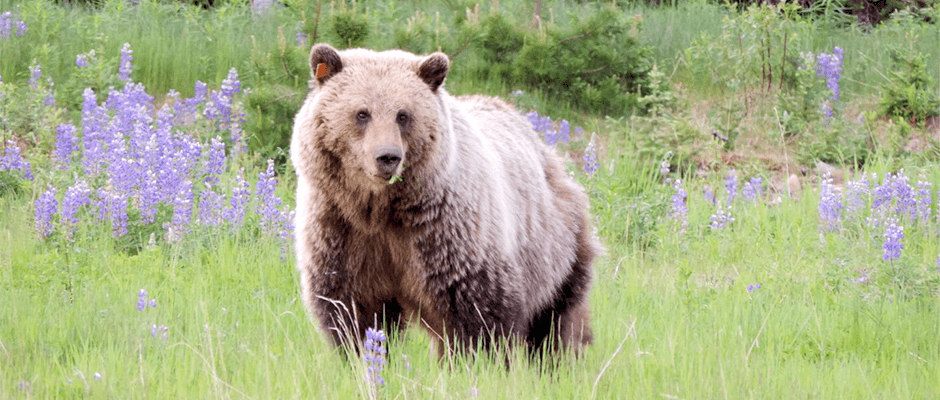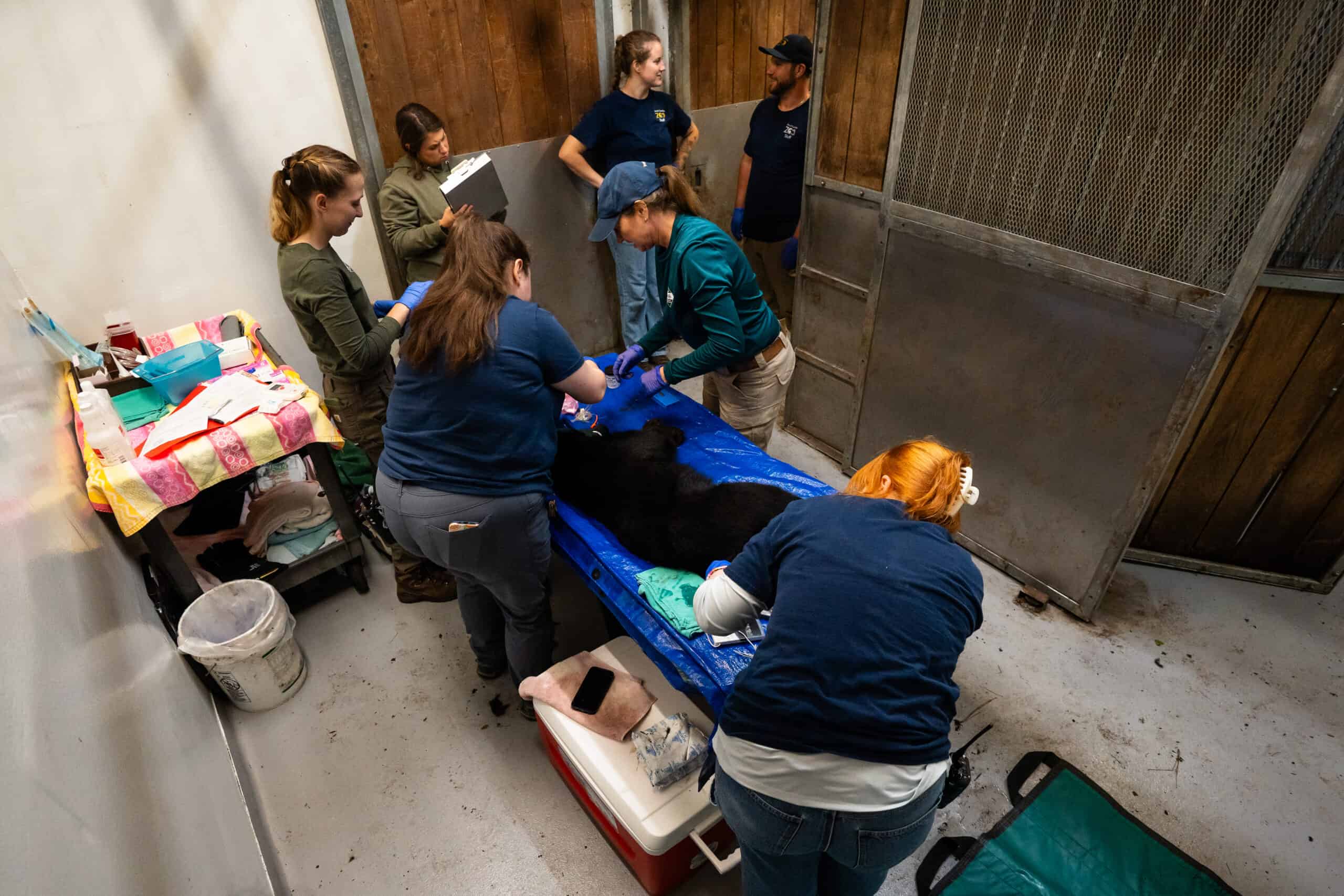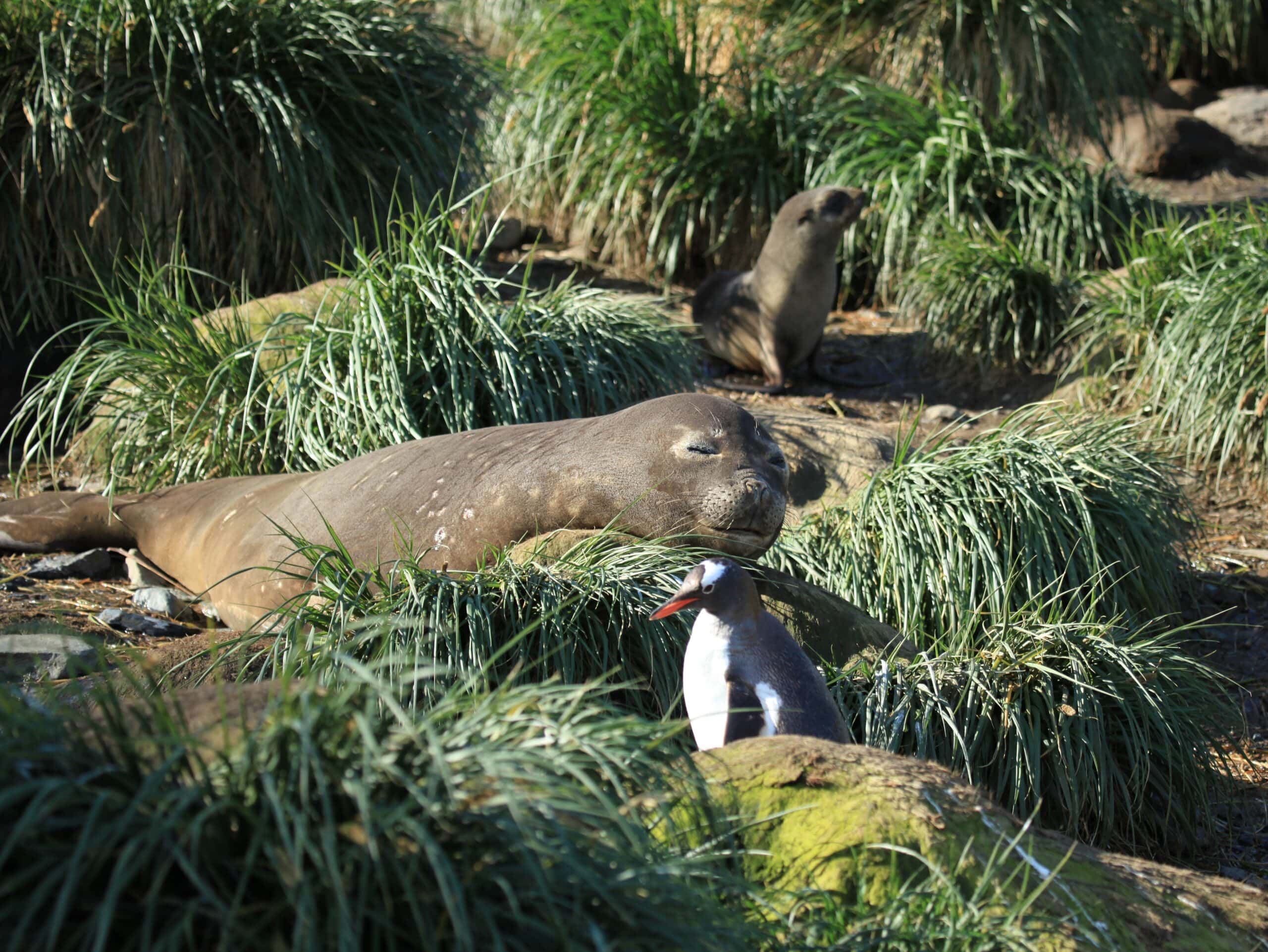Share this article
JWM: Grizzly translocations more successful early in season
To reduce conflicts with humans, grizzlies (Ursus arctos) in Alberta are often moved to other areas, but where and when these translocations take place can have a big impact on how well the threatened grizzlies survive.
A recent study published in Journal of Wildlife Management found that translocations were most successful early in the year and when the bears were moved to areas with little risk of run-ins with humans.
“Translocations have been a longstanding management tool in Alberta for addressing human-bear conflict,” said TWS member Sarah Milligan, a wildlife research biologist with fRI Research and lead author of the study published in Journal of Wildlife Management.
Because the grizzlies have been listed as threatened under Alberta’s Wildlife Act since 2010, Milligan and her colleagues with the Alberta government wanted to find out how these translocations affected recovery objectives in both the short term and long term.
“Did they live, die or return to the capture area, and why?” she said. “Can we identify what factors caused translocations to fail versus factors that resulted in successful ones?”
Looking at translocations from 1991 to 2013, they found that out of 110 translocation events, 77 were failures and 33 were successful.
The team evaluated three types of factors that could potentially affect the bears’ success: bear-specific factors such as sex, age class and conflict history; management-related factors such as how far the bear was moved and the time of year it was moved; and habitat factors such as habitat quality and mortality risk at the capture sight.
They found that in terms of short-term success, moving bears earlier in the year and releasing them in areas of low mortality risk and in close proximity to a river improved the odds of success.
Later in the year, bears face higher mortality risk due to conflicts with humans, Milligan said. In the fall, other research found, bears in search of food to prepare for winter may have run-ins with hunters when they come across animals that hunters have taken, and they are more likely to seek for food from garbage containers or other human sources.
Why they’re more successful near rivers nearby is unclear, Milligan said. “I think we need better data of fine scale movement of translocated bears to specifically understand why they’re benefiting from the presence of a river, but it may be related to travel or their initial recovery after release.”
As for long-term effects, researchers looked at denning, habitat selection and movement. Comparing translocated grizzlies to resident bears, they found that moving bears more than 100 kilometers significantly reduced their failure rates from homing, but moving them outside of the bear management area of capture resulted in large home ranges that could increase human-bear conflict and mortality risk.
“Our results suggest they really need to carefully evaluate the situation — when and if and how far — to translocate bears,” she said. “In either the short-term or long-term, both short distance and long distance translocations come with risk.”
Header Image: A translocated grizzly bear stands near a road in Alberta. Researchers found translocations early in the year are the most successful. Journal of Wildlife Management








